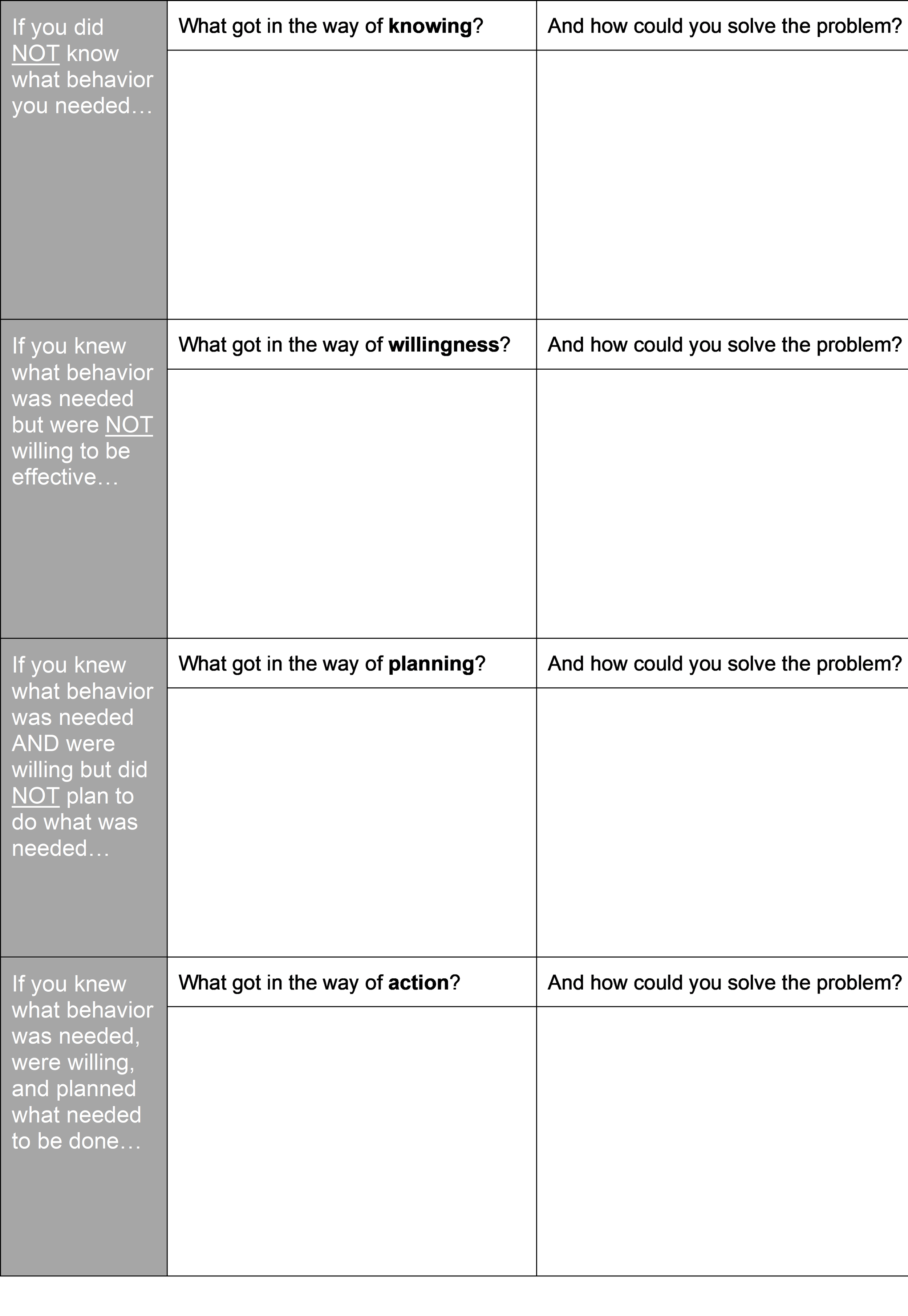Missing Links
Behavioral Chain Analysis (BCA) instructions
Describe the Target Behavior, which could be self-harm, alcohol or other drugs of abuse, yelling, missing a therapy session, etc.
· Be specific. Be detailed with observe and describe.
· Identify exactly what you did or said.
· Describe the intensity of the behavior or aspects of behavior that are important.
· Describe the target behavior with enough detail that an actor in a movie could recreate the behavior.
It is important to also list the values the behavior goes against. This helps to realize the importance of the target behavior and why it leads to shame and why you are working hard to change it.
Describe the Prompting Event that started the chain of behavior. Start with an event in the environment even if it does not seem like it was “caused” from the environment. Example questions are:
· When did the sequence of events that lead to the target behavior begin? When did the problem start?
· What was going on the exact moment the chain started?
· What were you thinking, feeling, and doing at that time?
· Why did the target behavior happen on that day rather than any other day?
Think of some things that could have prevented the prompting event.
Describe the Vulnerability Factors in you or your environment that made you sensitive to the prompting event. What factors made you more vulnerable towards a problematic chain? What gave the prompting event such power? Relevant factors include:
· Pain, physical Illness, or unbalanced eating or sleeping
· Use of alcohol or drugs, not taking medications as prescribed
· Stress in the environment
· Intense emotions such as loneliness, anger, fear, shame, etc.
· Previous behaviors of your own that led to stress
From the Vulnerability Factors, create a prevention strategy for how you could keep the chain from starting by reducing your vulnerabilities.
Go to page 2 of the BCA form.
Describe the Chain of Events (left column), including thoughts, body sensations, urges/actions, and emotions. Often these do not happen in order but can feel like a mess of things happening all at once. Fill this column out in excruciating detail. Be specific to the point they could be events in a script for a play. Links can be:
· Actions or things you do
· Body sensations or feelings
· Thoughts (beliefs, ideas, expectations)
· Events in the environment or what others do
· Emotions
At times it can be difficult to recall thoughts and feelings as they happened. Wondering how someone else might have felt can show things overlooked in the moment. Be sure to wonder if there are any gaps or connectors between each link in the chain.
Describe the Skills (right column) that may have been helpful to engage in those moments that might have helped decrease the likelihood of the target behavior occurring.
· Which links were key, leading to the Target Behavior?
· Circle each link where if something else been done then it would have likely prevented the Target Behavior.
Go back to page 1 of the BCA form.
Assess Consequences on the bottom half of page one. Consequences can be short term or long-term. Short term consequences are often positive, such as decreased emotional intensity. Long term consequences are likely to be negative as target behaviors are nearly always against values.
· Do consequences affect relationships? How did others act?
· How did you feel immediately after the behavior?
Describe how to Repair consequences of ineffective behaviors. This helps to reduce conflict in relationships, and to decrease the likelihood of future ineffective behaviors.
· How did you harm others?
· Be trustworthy to earn trust, rather than gifts or kind words, or apologies.
· Repair by succeeding, not by berating yourself.
Behavioral Tech, LLC 4556 University Way NE, Suite 200 Seattle, WA 98105
Phone 206.675.8588 Fax 206.675.8590 www.behavioraltech.org
Example BCA 1st Page
Example BCA 2nd page




